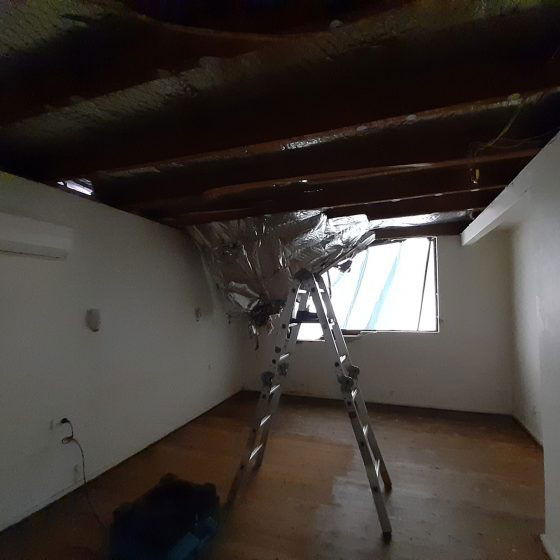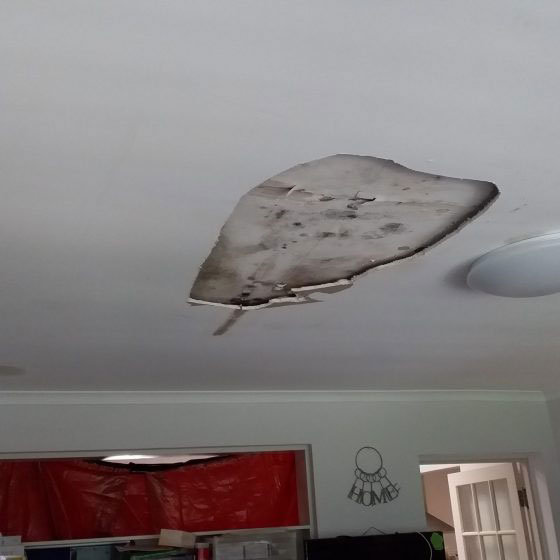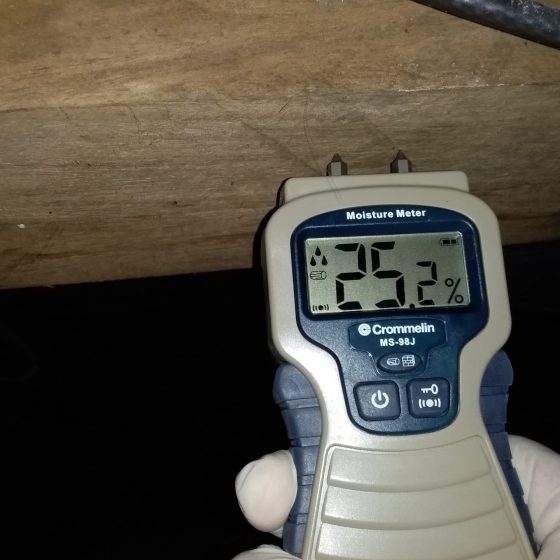Occupational Hygiene Services
Microbiological Inspection and Clearance (Mould)
What is mould
Mould is part of a group of very common organisms called fungi that also include mushrooms and yeast. It is present everywhere, both indoors and outdoors. Many different types of mould exist, each have the potential to cause health problems and structural issues within a building. It is when mould is able to gather and build-up due to a variety of reasons that human and animal health can be seriously impacted.
How mould occurs
Rapid mould spore growth and gathering will occur generally following the intrusion of water into a building or continued dampness of a surface, such as damaged roof tiles or a leaking pipe. Combined with a warm, humid environment with inadequate ventilation and the inability of a surface to be dried provides the perfect conditions for rapid mould growth to take hold.
Once mould colonies are established, they will quickly begin to release spores that become airborne and spread throughout the structure or building it is in. Areas that have never showed signs of mould growth, however now are due to no particular reason, may indicate the presence of a well-established mould colony that has taken hold elsewhere within the structure or building.
Common areas for mould growth include ceiling spaces, wall cavities, basements, cupboards, and bathrooms. Mould spores occur frequently in nature and can easily be brought into the home or workplace by airflow through doors and windows, as well as being carried in on objects or people. Weather events such as storms where structural damage to the building or flooding has occurred will highly likely result in mould growth occurring within the building or structure. If spores land in an area that is damp then it is very likely to grow and spread.
Signs of mould
Mould is not always easily able to be recognised. Often mould will appear as a stain, smudge, or otherwise a discolouration of the surface it is on. Mould colonies may also at times have a fuzzy or hairy appearance. Mould colouration can vary depending on the species of mould that is present. Commonly mould will appear as black, white or green. However, certain species of mould will appear as a range of other colours including brown, orange or grey.
More often than not mould presence can also be detected by an odour. When there is a musty, dank or rotting wood smell within a structure or building it is highly likely mould growth is occurring. However not all species of mould produce an odour, so it is possible for mould growth to occur within an inaccessible location without those accessing the building or structure being aware of its presence until health impacts begin to show.
Structurally speaking actively growing mould feeds on organic matter such as wood, paper, cardboard, fabrics and soap. As it feeds and grows, the mould gradually damages the surface, which can cause damage to the interior of a building.
Dangers of mould contamination
Early health impacts are another way to detect whether or not your building could be harbouring mould contamination. Part of the mould reproduction cycle is to release spores that become airborne and are invisible to the naked eye. When continued exposure to these mould spores occur health impacts will begin to show.
If you find yourself suffering from a running nose, blocked nose, irritation of the eyes or skin, suffering from respiratory issues such as continued wheezing or coughing including if you are asthmatic and are having an increased amount of asthma attacks. If you are suffering any one of these health impacts it could mean mould is present within your building and now causing damage to your health.
Health issues associated with mould spores:
- Liver cancer
- Lung cancer
- Immune deficiencies
- Hypersensitivity
- Permanent respiratory problems
- Cardiovascular disease
- Lung infection
Continued exposure to mould will lead to serious health implications for yourself and anyone else who is exposed including animals such as pets and may even develop mould infections of the lungs. In severe cases, lung cancer and liver cancer can develop, along with cardiovascular disease, permanent respiratory problems, immune deficiencies and hypersensitivity such allergies and autoimmunity whereby your immune response begins to target healthy cells and tissue. Those who are most vulnerable to mould-related illness include asthma sufferers, pregnant woman, infants and children, elderly people and those with a weakened immune system.
Professional Inspections
If you are at all concerned whether there is possible mould contamination throughout your home or building EnviroX recommends a professional mould inspection by one of our qualified hygienists. Our mould inspection will determine the health risks associated with the microbiological infection that could be possibly contaminating your home or building. Our microbiological inspections assess multiple factors by collecting moisture readings, air samples and surface samples throughout the structure. Using evidence that is gathered during the inspection, EnviroX will be able to determine what mould species is present and growing within the area or areas and including those that are not visible or accessible. From these criteria and gathered evidence EnviroX will then provide a professional legal report containing recommendations and conclusions for potential remediation works that will be best appropriate and determined on a site by site basis. Our reports will also identify the mould species present and the severity of site contamination.
Microbiological Clearance Inspection
After removal works have occurred a post mould removal clearance inspection will need to be conducted. A clearance inspection will involve investigating whether the mould contamination throughout the contaminated areas has been removed and that any mould issues within the site have been resolved. This is achieved by finding if mould counts (air and surface) have returned to levels found in normal environments of the same type (control / ambient samples).



